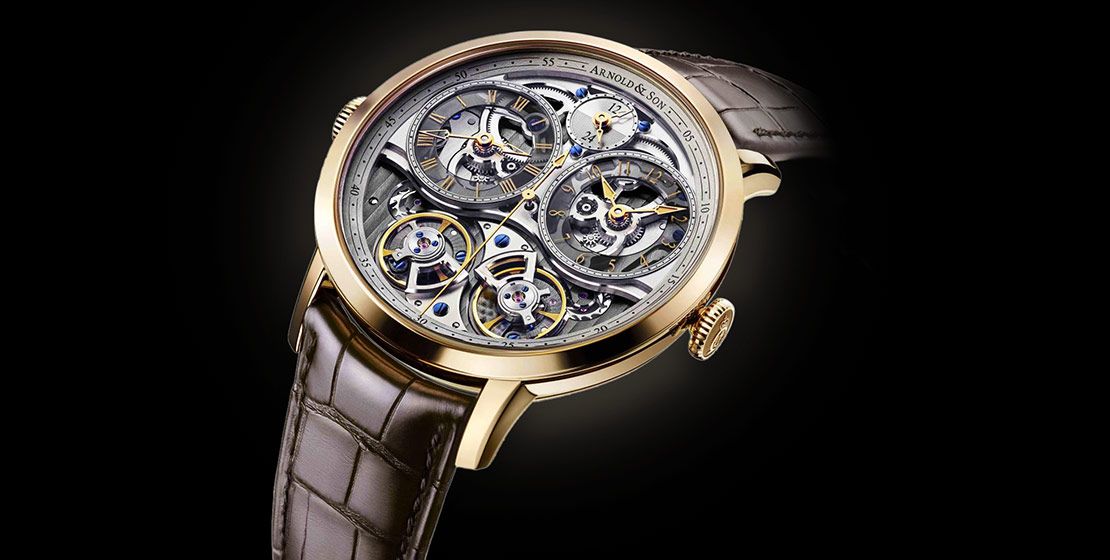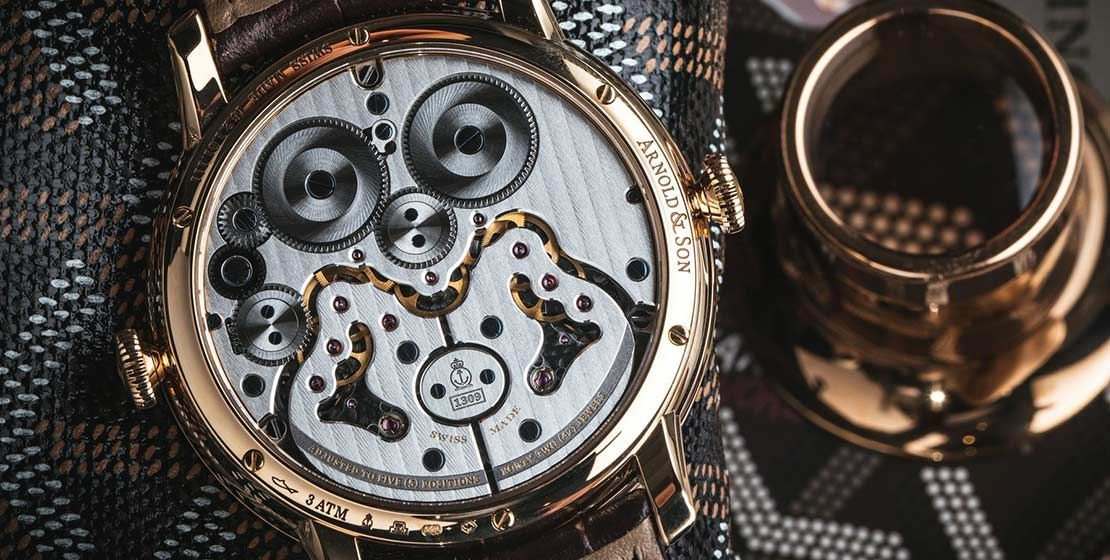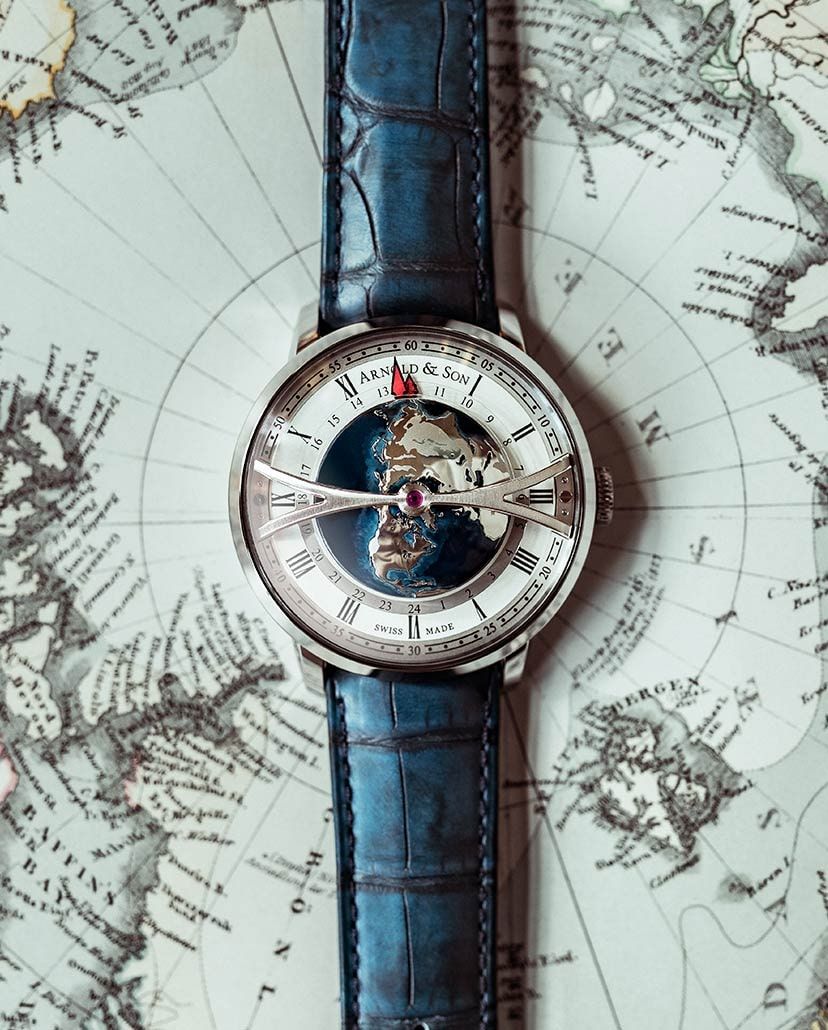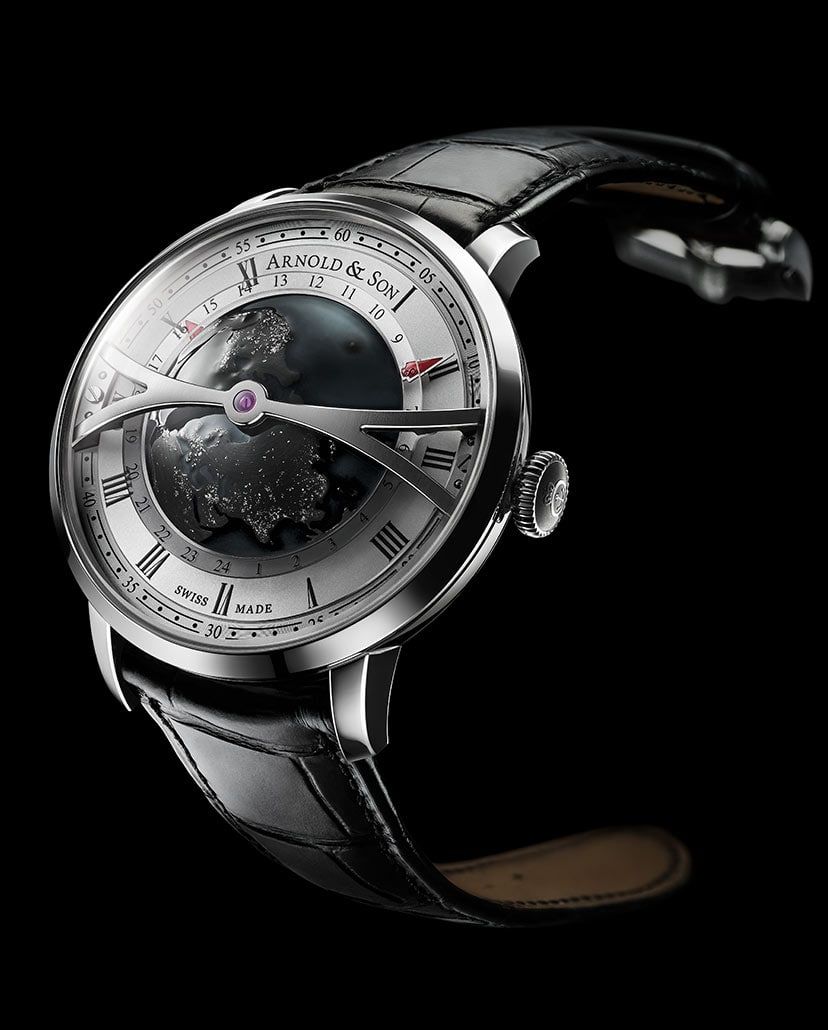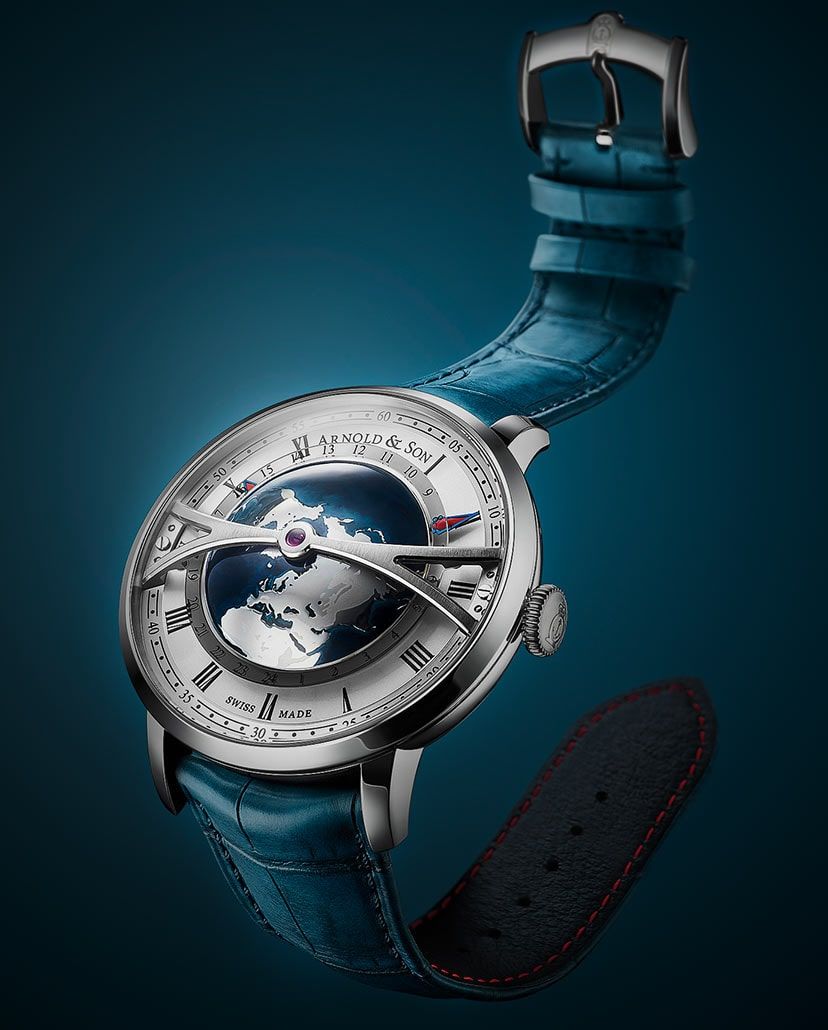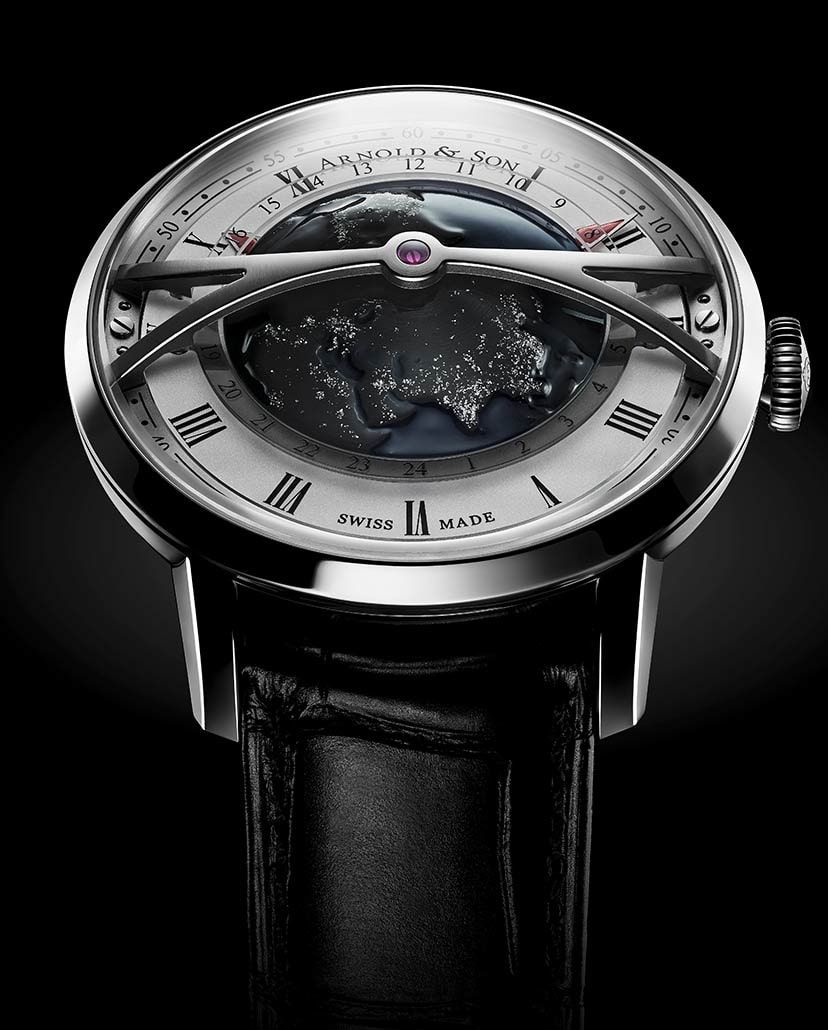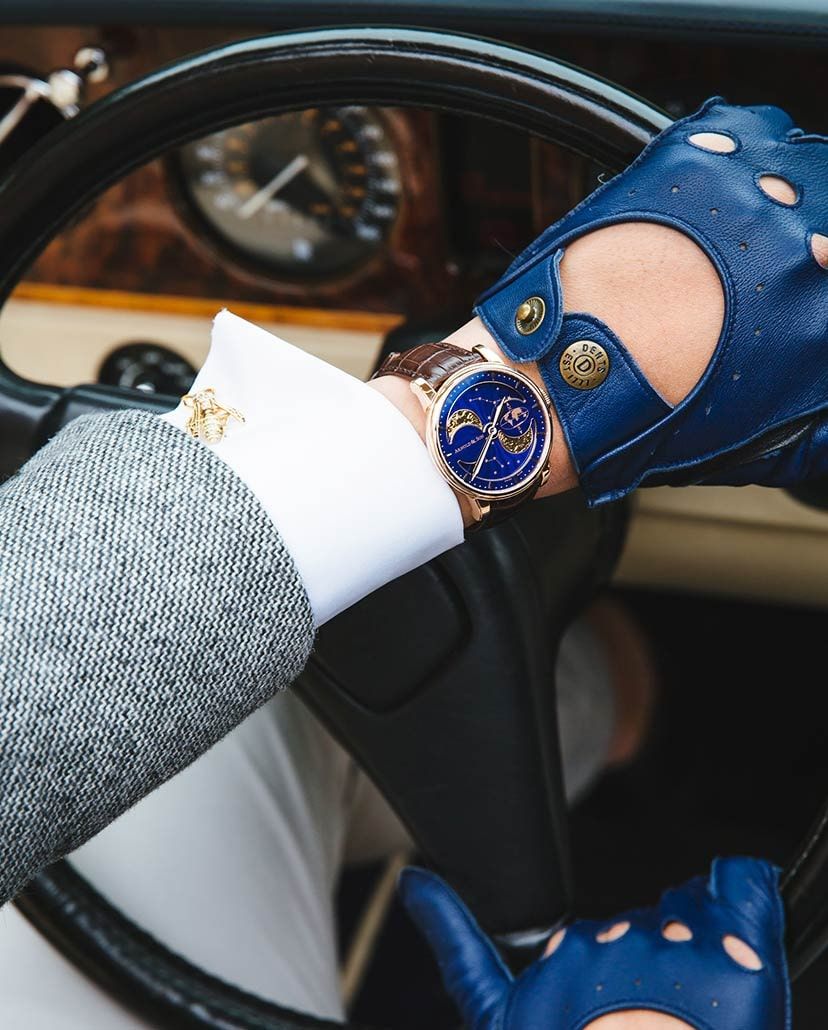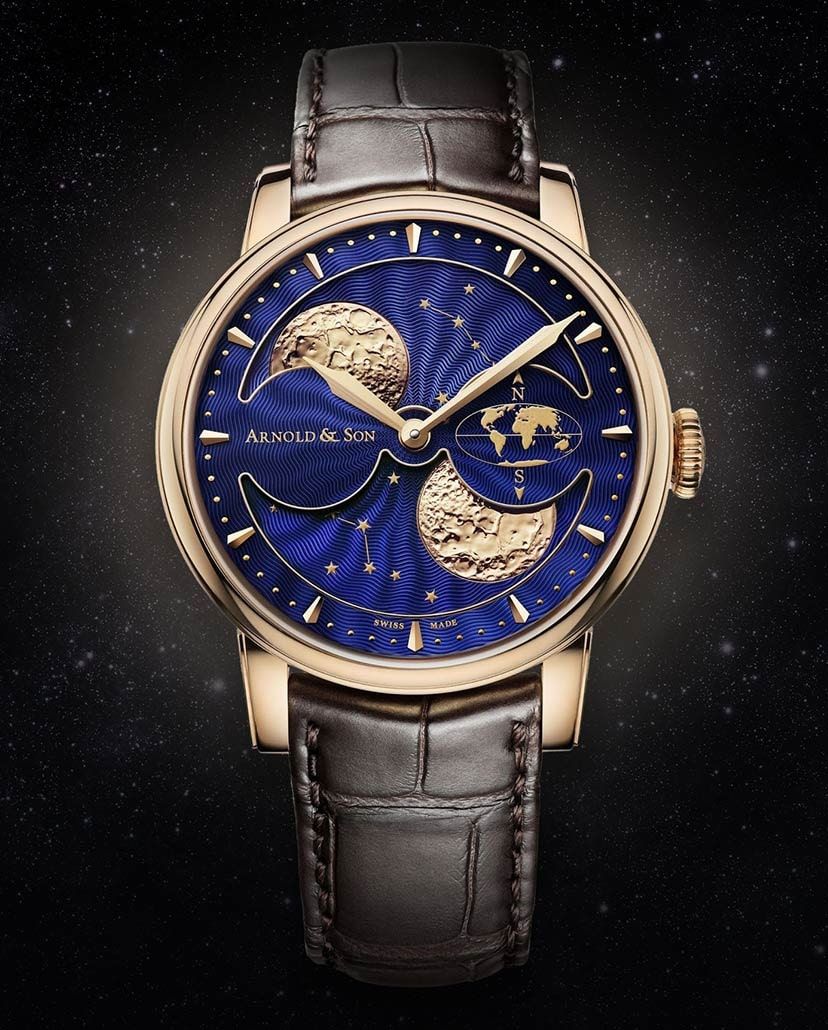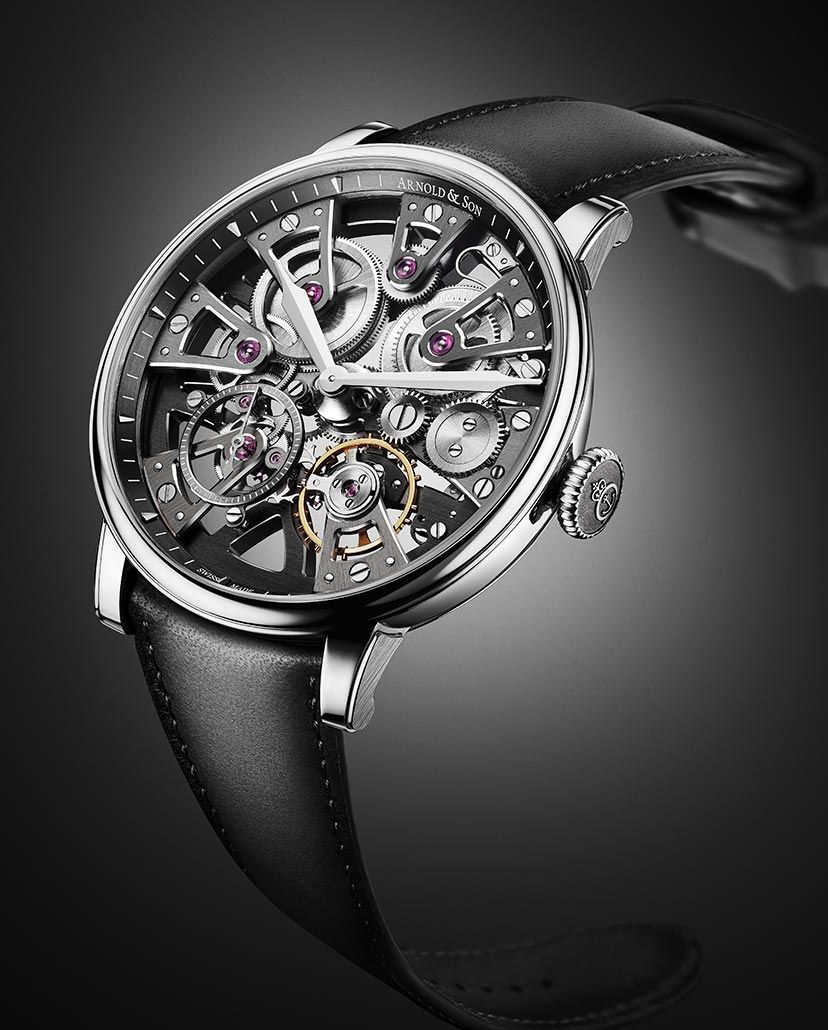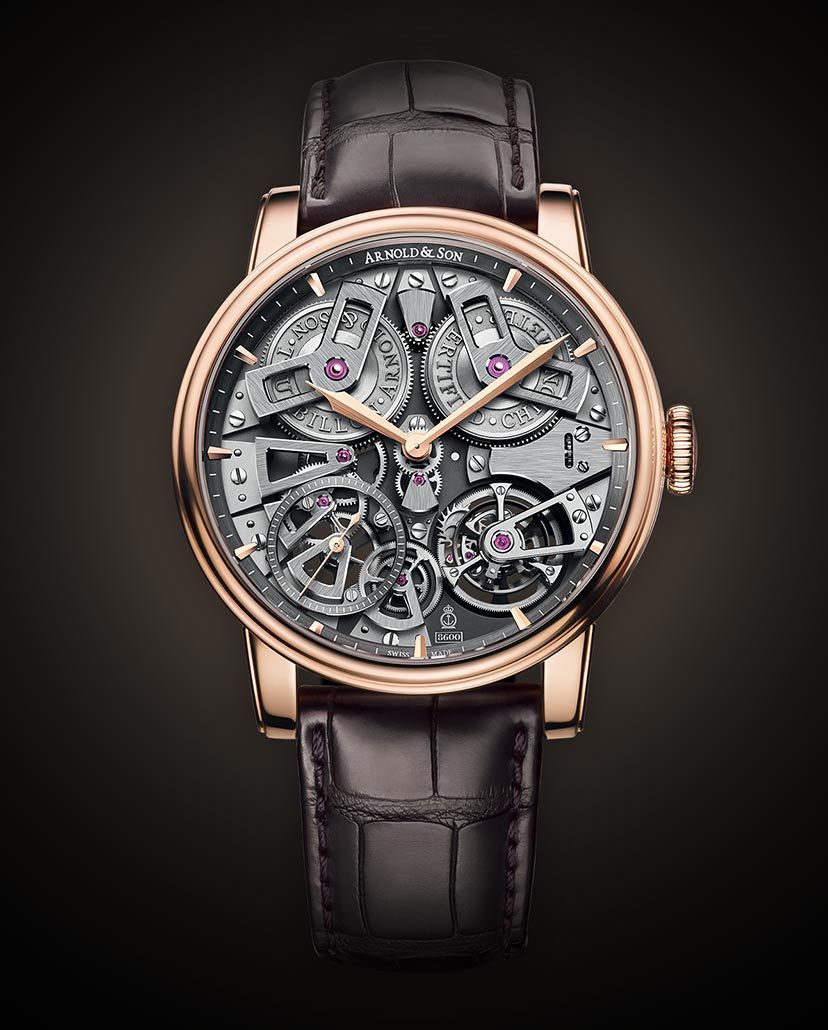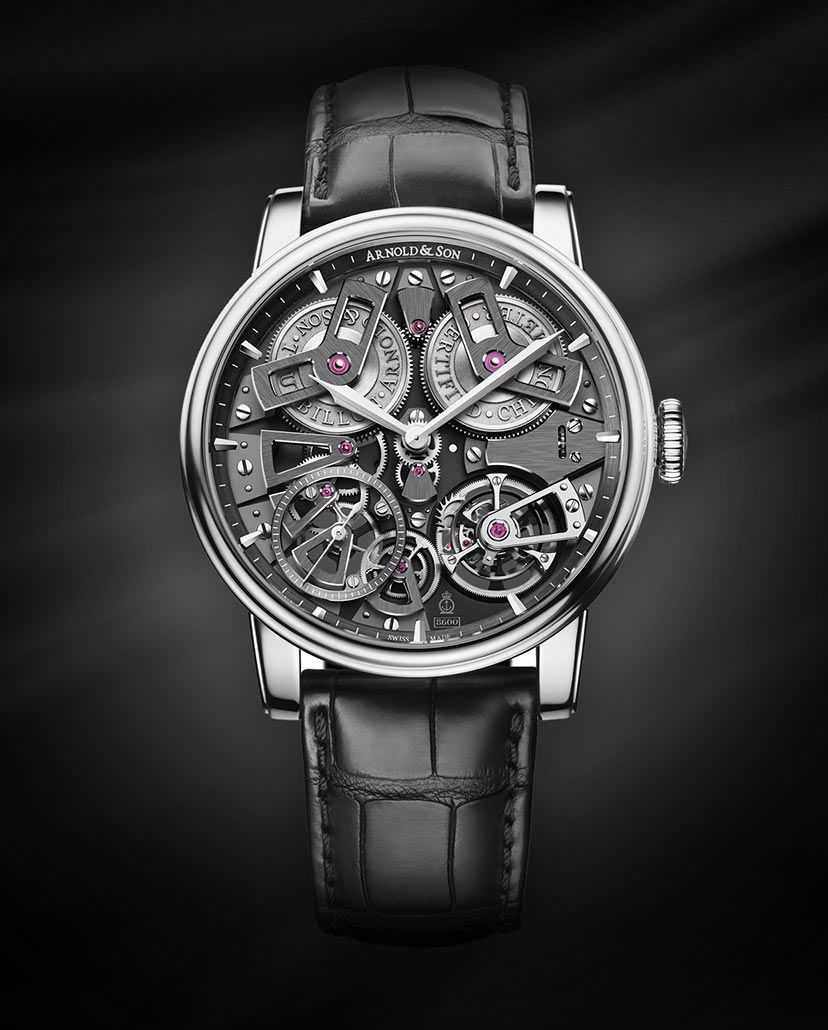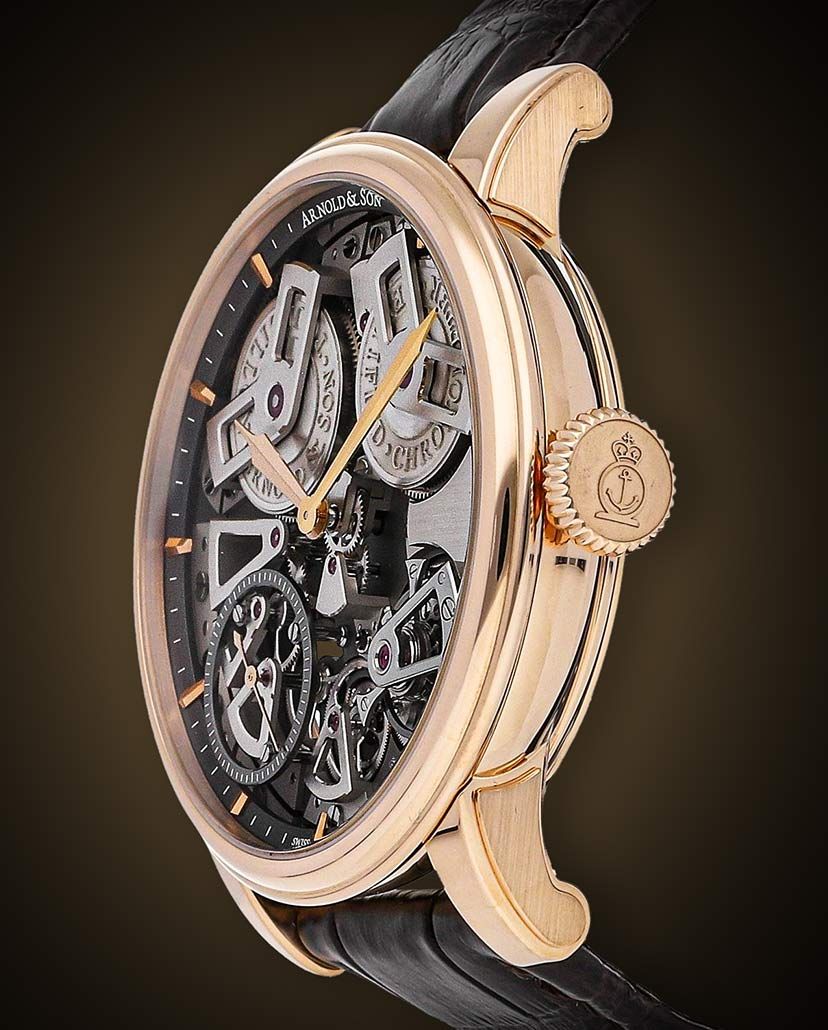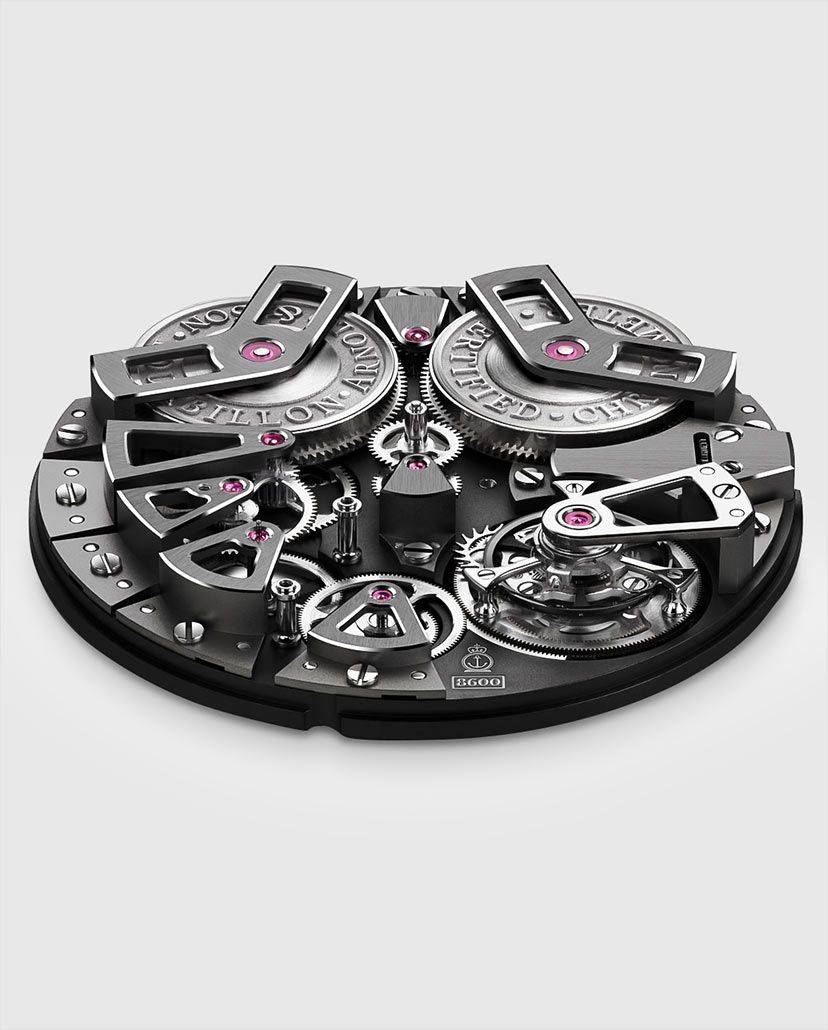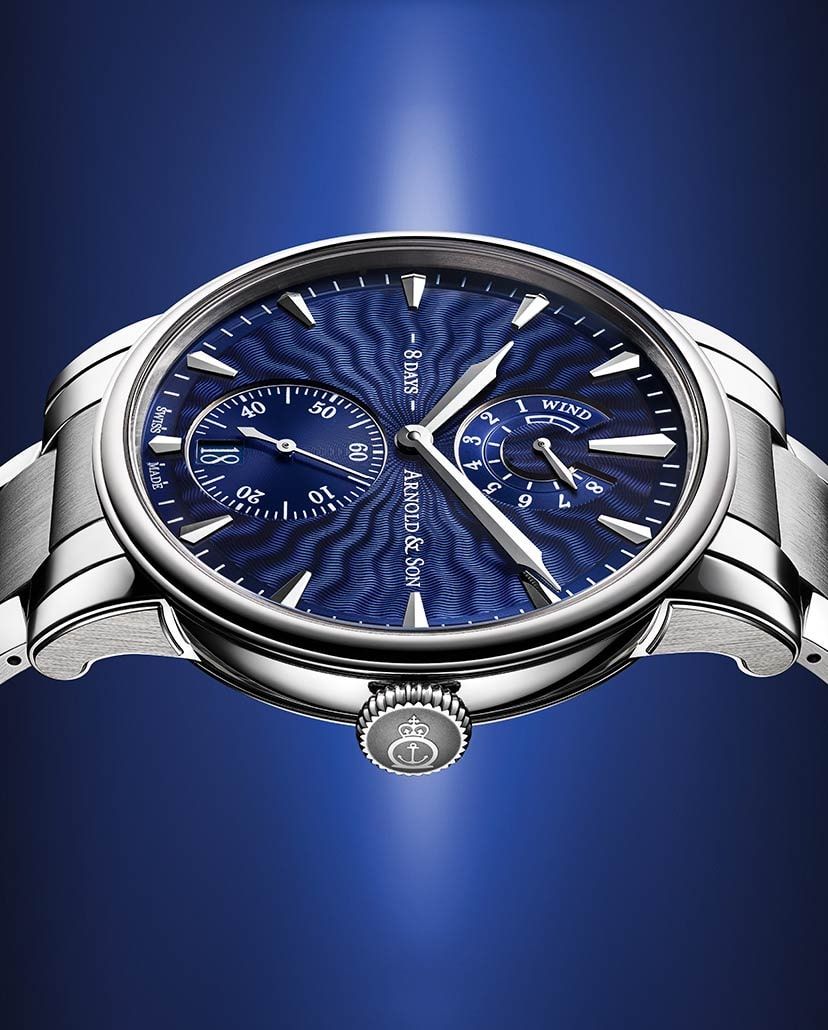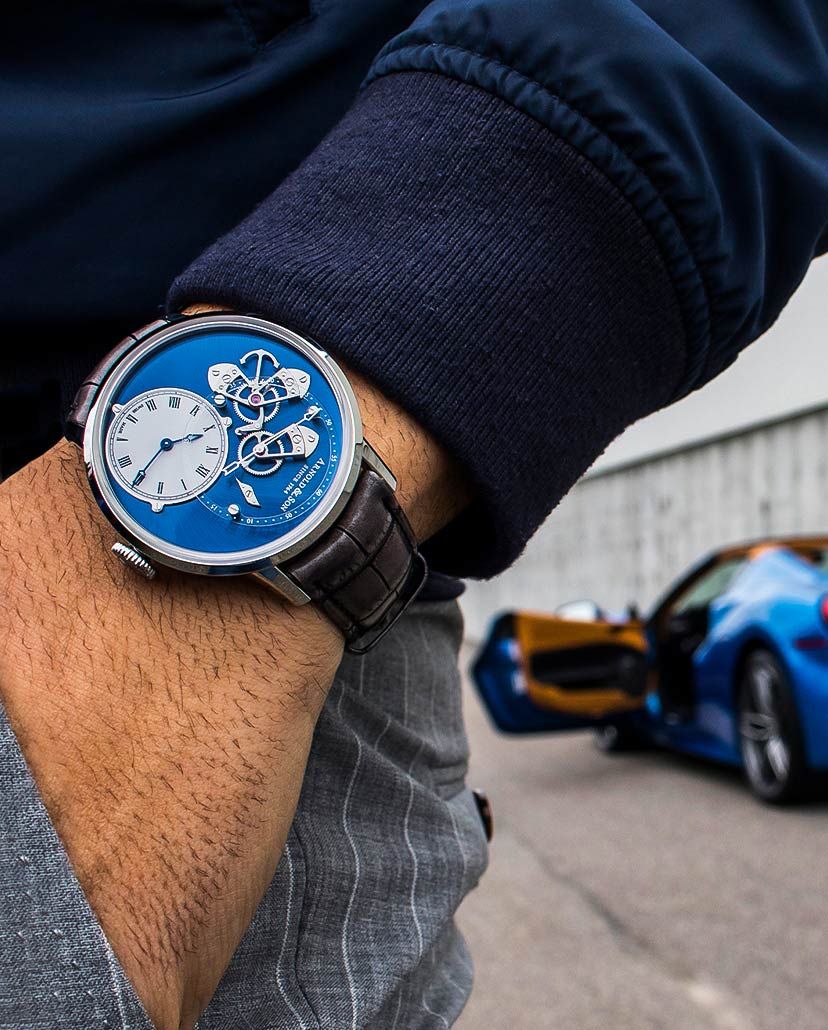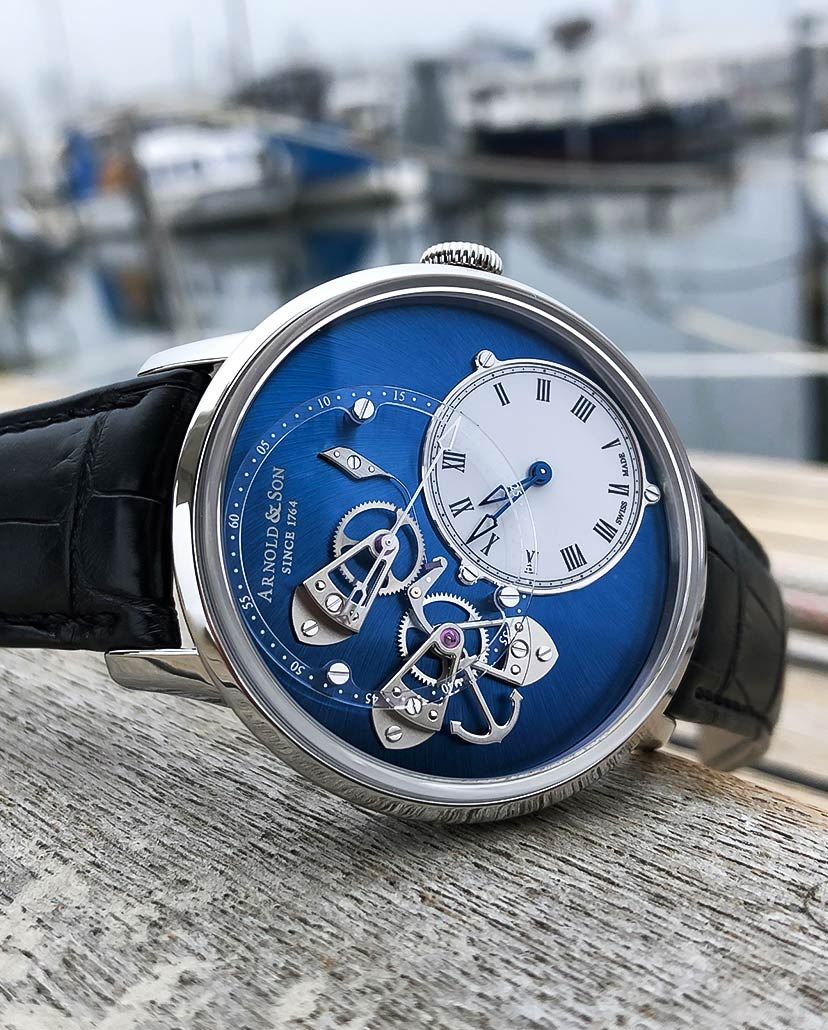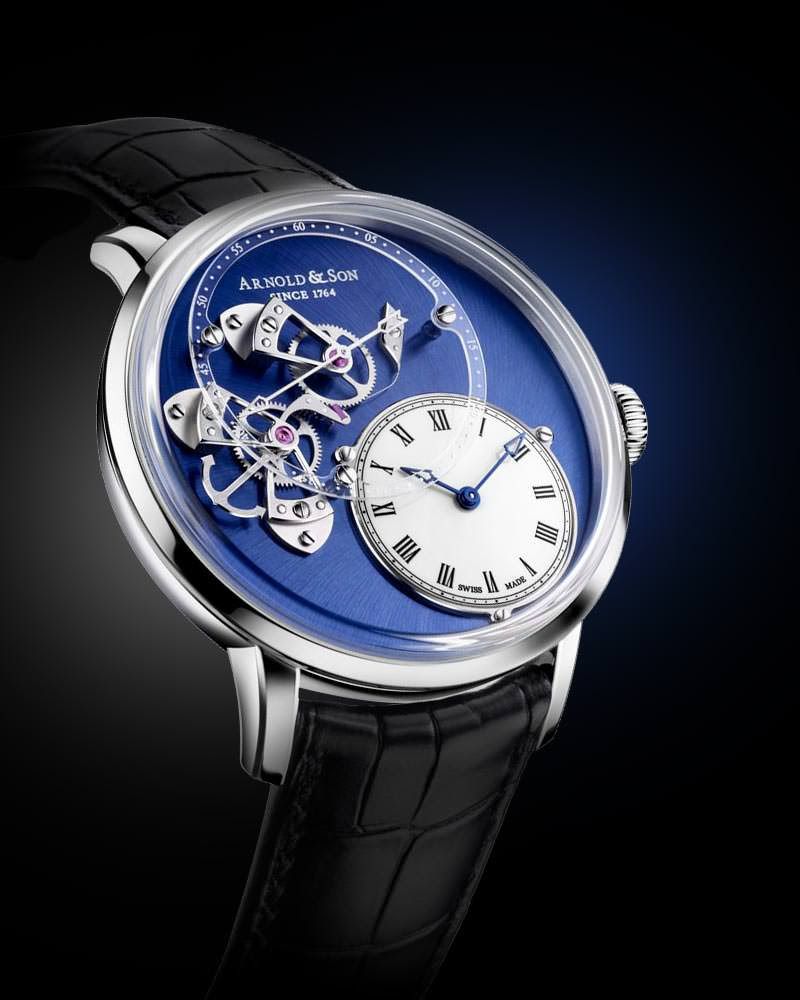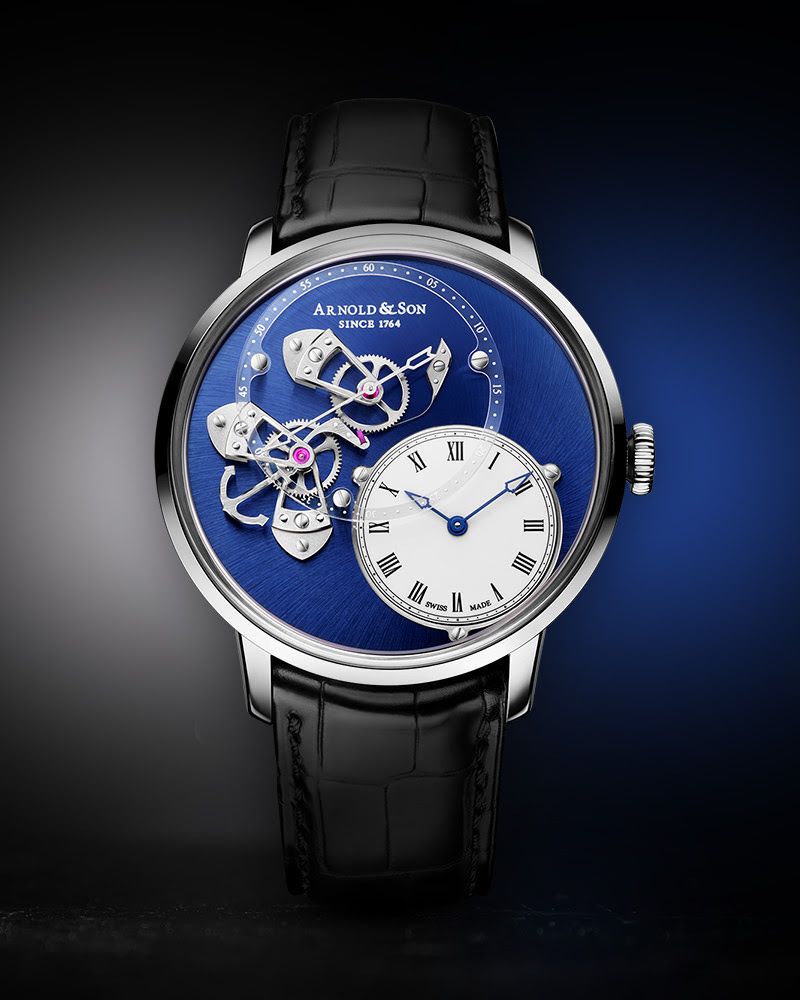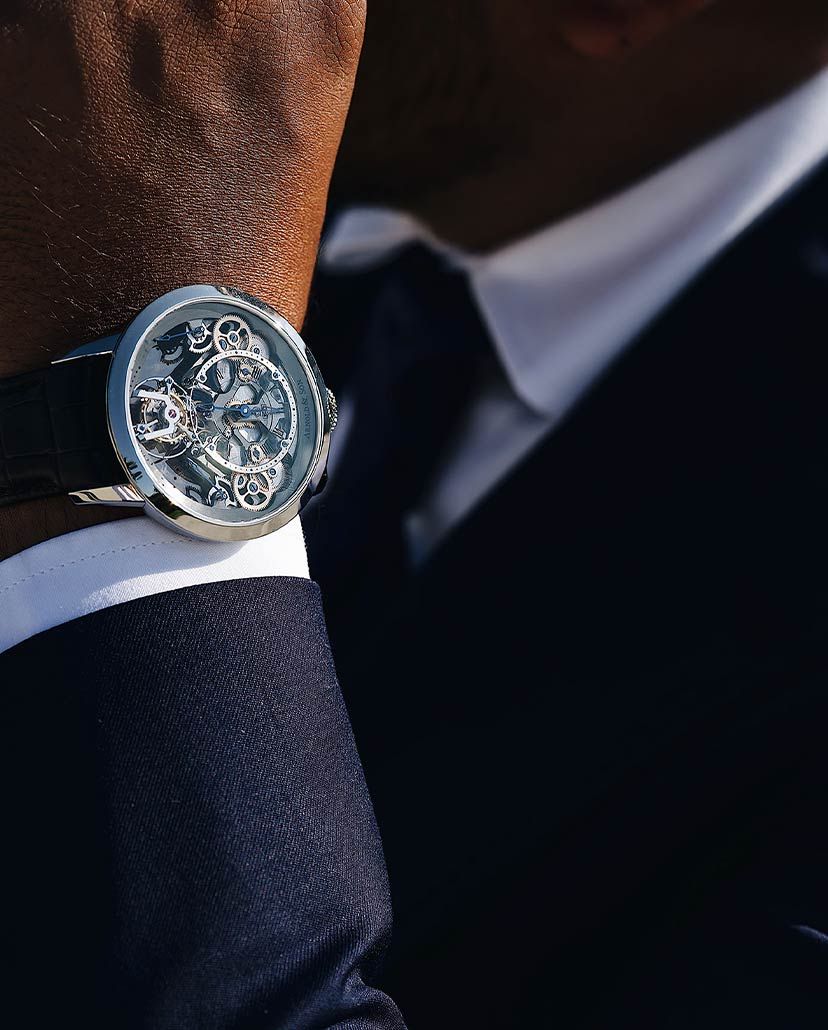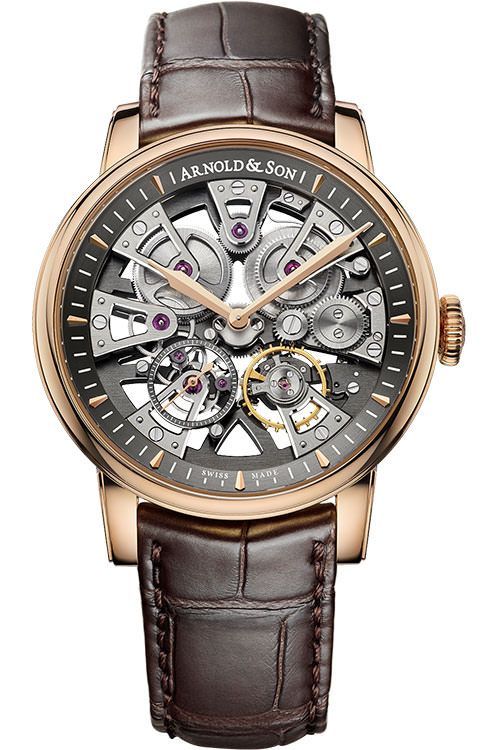Round-UpComplex Artistry: 10 Stunning Arnold & Son Timepieces That Are Hallmarks Of Haute Horlogerie
Known for their distinctive aesthetic flair and mastery of rare technical skill, Arnold & Son are in the top league when it comes to executing open-worked movements with sheer finesse. Steeped in British watchmaking heritage and strengthened by Swiss savoir faire, the brand have become immensely popular among watch aficionados, who simply can’t stop raving about symmetry and precision in complex structures. We list our top picks
May We Recommend
Named after John Arnold, an English watchmaker of the 18th century—known for creating the most accurate marine chronometers during the era—Arnold & Son as a brand can trace their roots back to 1764 England, but began their second innings almost two centuries later in 1995 as a Swiss company based in La Chaux-de-Fonds. It is here at the manufacture that the brand develop some of the most technically advanced timekeepers with complex in-house movements. Focusing primarily on symmetry, precision and skeletonised movements—the brand also take their cues from Arnold’s creative genius, with zero-tolerance for any deviations when it comes to accuracy. A typical Arnold & Son timepiece is instantly recognisable with its three-dimensional movement construction that includes: cantilever balance-cocks, the George V-style bridges, the quest for multiaxial symmetry and the painstakingly crafted guilloche dials that adorn the skeletonised components. Besides this, they also craft some of the most exquisite moon phase complications that are unlike the ones that are a dime a dozen. “Arnold & Son is literally ‘Swiss watchmaking with British roots’,” states Bertrand Savary, president of Arnold & Son. “Meaning that we are purely Swiss-made, but we do not forget the legacy of John Arnold—among the greatest British watchmakers of the 18th century.”

Today, Arnold is remembered for revolutionising the horology landscape with patents for a detent escapement, a bimetallic balance, and a helical balance spring. But his most significant contribution is in developing the Pocket Chronometer No 1/36 in 1778—the first time-measuring instrument to be officially called a ‘chronometer’ for its unrivalled precision. This has been the foundation and framework for most of the complications rolled out by the brand in the contemporary scenario.
Known for redefining traditional horological craftsmanship, Arnold & Son have built a solid collection of distinct watches that are meant for people with discerning tastes. “Today, Arnold & Son’s identity is based on the brand’s ability to produce fine watchmaking complications that are linked to the heritage of John Arnold: chronometry, astronomy and world time,” Savary declares.
We bring you the top ten timepieces that embody the spirit of British watchmaking codes coupled with Swiss ingenuity.
World Time
“With World Time, there’s the Globetrotter, of course. It’s the best known timepiece by our Indian clientele,” Savary informs. “Inspired by John Arnold’s high-precision marine chronometers, the Globetrotter reimagines the world time function in a sculptural way. Held by a large central, arched bridge across the entire diameter of the dial, the three-dimensional terrestrial dome takes centre stage and is one of the world’s largest rotating world time displays on a wristwatch.”
DBG Skeleton Dual-Time
Symmetry has always been a hallmark for the brand whether it’s the design or the complex movement structure. With the DBG Skeleton Dual-Time, Arnold & Son have taken it up a notch by creating two entirely separate time displays. Developed, designed and manufactured entirely in-house, the movement had to be redesigned and re-engineered to produce this skeleton version. An acronym for ‘double balance’ and ‘GMT’—the DBG Skeleton harks back to the chronometers built by John Arnold and his son—the 18th century watchmakers whom the brand takes after. With an open-worked execution, the DBG Skeleton showcases Arnold & Son’s watchmaking prowess as well as attention to aesthetics with the newly developed manufacture A&S1309 calibre. It beats at a frequency of 21,600vph to supply a power reserve of 40 hours when fully wound, thanks to its double-barrel system. This 44mm complication in rose gold can set the minute hand independently when keeping track of time zones. A sub-dial at 12 o’clock displays the two time zones on a 24-hour disc, thereby allowing the wearer to not only see the time difference between the two zones but also keep track of day and night in both. Water-resistant to 30m, the timepiece is presented on a brown leather strap that complements the case’s rose gold hue.
Globetrotter Day/Night
The marine chronometers developed by John Arnold had witnessed some of the toughest voyages on sea, back in the day. The Globetrotter seeks inspiration from these clocks that displayed superior precision, even in zones where it was easy to lose track of direction and time. With its large, cupola structure, the Globetrotter stands out for its prominent central arched bridge, with its three-dimensional terrestrial dome. Crafted in stainless steel, the 45mm timepiece features one of the largest rotating world time displays on a wristwatch. What immediately catches the attention is the breathtaking view of the Northern Hemisphere depicting the continents, mountains and oceans—etched on a brass surface. The layers of the oceans and continents are brought out by chemical etching, and their upper surfaces are polished while the mountainous areas are sandblasted to create visual depth. The oceans are lacquered by hand with different deep blue tones, and the hemisphere is treated with several layers of translucent lacquer, before the final polishing. The silvery-white opaline dial displays Roman numerals for the hours and a circular brushed chapter ring for the minutes. Both are indicated by red lacquered hands for optimum legibility. The world time display is surrounded by a 24-hour disc in sapphire crystal, fixed to the same bridge that holds the hemisphere, and makes one rotation every 24 hours. It is protected by a curved sapphire crystal glass with anti-reflective coating on both sides. The watch is user-friendly with its three-position crown system where the first position winds the movement, the second corrects the local time indicated via the hour hand, and the third sets the hour and minute hands as well as the world time. This complication is powered by the in-house calibre A&S6022 with an automatic winding system, supplying energy for at least 45 hours, when fully wound. The exhibition caseback offers a view of the NAC grey-treated movement with polished brides and Geneva stripes, with a skeletonised oscillating weight.
There’s also the Globetrotter Night version that offers a realistic and meticulously rendered interpretation of the Northern Hemisphere at night. Here, the brass used for depicting the continents has undergone a deep grey galvanic treatment before being hand-lacquered in a black-grey hue, while the oceans are lacquered in grey-blue. The brand have left no stone unturned to provide an authentic representation, and have used hand-applied silver sparkles to portray the city lights, twinkling across the globe. Both versions are water-resistant to 30m, and are presented on a leather strap—blue for Day and black for Night.
Astronomy
“In astronomy, Luna Magna is the best and most recent example. Arnold & Son have an ancient, long-standing relationship with the phases of the moon,” shares Savary. “Guided by the life of John Arnold and the mark he made in the Royal Navy during the 18th century, the maison have frequently endeavoured to depict the age of this satellite as accurately and as beautifully as possible. By completely reinventing the way the moon is depicted, we pushed the boundaries of this astronomical and poetic watchmaking exercise.”
HM Perpetual Moon Steel
The HM Perpetual Moon is a feast for the eyes with its striking blue dial and silvery accents, framed in a polished, shiny 42mm stainless steel case. The fine guilloche replicates the pattern of sunrays, originating from the centre of the dial, where the moon phase mechanism takes up almost the entire upper half. The hand-engraved moon looks stunning against the vivid blue backdrop, and showcases the eight phases of the earth’s satellite—in between waxing and waning. This gorgeous piece is brought to life by the hand-wound calibre A&S1512 containing 27 jewels and a double-barrel system that provides a generous power reserve of 90 hours. This is also one of the most accurate moon phase complications one can find, and promises extreme accuracy with only one day’s deviation every 122 years! It features Geneva stripes, thermally blued screws, manually bevelled and polished angles, and fine circular graining. Water-resistant to 30m, this classic moon phase wristwatch is presented on a black, hand-stitched leather strap.

HM Double Hemisphere Perpetual Moon
There’s no denying that Arnold & Son produce some of the most exquisite and complex moon phase watches. A part of the Royal Collection, the HM Double Hemisphere Perpetual Moon features not one but two of the biggest moon phase indications seen on a wristwatch. The basic idea behind the watch is that the moon appears different, when viewed from the Northern and Southern Hemispheres. Hence the brand have replicated this vision in this stellar complication that demonstrates its prowess in traditional watchmaking and classical decorative arts. It comes in an 18-karat red gold case that measures 42mm, and frames a blue guilloché dial with golden constellations along both the hemispheres. The moons are hand-engraved with a three-dimensional effect, measuring 11.2mm, and look resplendent against the blue dial, which depicts a wave-like pattern. This is protected by antireflective sapphire crystal that extends up to the caseback, which allows the wearer to get a glimpse of the eight lunar phases. The timepiece is powered by the hand-wound manufacture calibre A&S1512, which beats at 21,600vph, and supplies the watch with a 90-hour power reserve. High on accuracy, it measures 5.35mm in thickness, comprises 27 jewels, and needs no adjustments for 122 years. Water-resistant to 30m, this artwork on the wrist is presented on a brown leather strap.
Luna Magna
Another stunning creation from Arnold & Son that showcases its expertise in moon phase watches is the Luna Magna, unveiled during the digital edition of Watches and Wonders 2021 in April this year. While a typical moon phase watch depicts a cut-out disc representing the celestial body, rotating to indicate various lunar phases; Arnold & Son have chosen a different route for this astronomical delight that is housed in an 18-karat, 44mm red gold case. The night sky is represented by aventurine glass on the dial, and at the six o’clock position lies a three-dimensional moon, measuring 12mm—made of marble and aventurine. The brand claim that this is the largest rotating moon ever built into a wristwatch, where the moon emerges from the mainplate of the A&S1021 calibre without upsetting the overall balance of the timepiece. Another interesting aspect is that the moon is slightly elevated, appearing halfway up the movement—perfectly positioned between the top and bottom. The upper part is encased in a glass box, making it look bigger to the naked eye. This is also replicated on the caseback, and has resulted in a well-proportioned watch that doesn’t compromise on comfort, while strapped onto the wrist. There’s also an off-centred dial at 12 o’clock with blued hour and minute hands. This poetic complication is driven by the new in-house hand-wound A&S1021 calibre, operating at 21,600vph with a power reserve of 90 hours. The accuracy is on point, and the brand have factored in a single-day deviation in 122 years. Water-resistant to 30m, the Luna Magna is a limited edition of 28 pieces, presented on a navy blue leather strap with a red gold pin buckle.
Chronometry
“In chronometry, the Tourbillon Chronometer 36 pays tribute to the John Arnold’s pocket watch No 1/36 that displayed vastly superior chronometry compared with every other watch at the time, after a successful 13-month trial at the Greenwich Observatory in 1779,” Savary says. “John Arnold coined the term ‘chronometer’ to refer to his No 1/36 pocket watch, which marked a new era of unprecedented precision in timekeeping.”
Nebula
The Arnold & Son Nebula stands out as one of the most striking skeleton watches in the brand’s repertoire. The name ‘Nebula’ (an astronomical term for a cloud of cosmic gas and dust formed by the debris of exploding stars) is based on the movement’s structure. This structure consists of bridges converging from the outside of the dial towards the centre, like perfectly symmetrical rays. Available in stainless steel or 18-karat rose gold, in a case size of 41.5mm, the watch boasts classical design codes, and is extremely comfortable on the wrist. The open-worked dial mesmerises with its complex labyrinths that reveal the intricately decorated movement, formed by 10 bridges fixed on the perimeter, seven of which are triangular with chamfered edges. Apart from the hours and minutes, there also an off-centred small seconds counter at seven o’clock. One can also see the double mainspring barrel at the top, which is responsible for the watch’s generous 90-hour power reserve. This is part of the manual-winding A&S5101 calibre, which operates at a frequency of 21,600vph, and is also visible through the transparent caseback, replete with contrasting finishes and colours along with a variety of detailing. Water-resistant to 30m, the 18-karat rose gold piece is presented on a brown leather strap, while the steel version is mounted on a black leather strap.
Tourbillon Chronometer No 36
Inspired by Arnold’s Pocket Chronometer No 1/36 built in 1778—the first time-measuring instrument to be referred to as a ‘chronometer’ for its unparalleled precision—the Tourbillon Chronometer No 36 pays tribute to this original masterpiece. With two versions presented in 2018 to mark the 240th anniversary of John Arnold’s invention, the 46mm manual-winding wristwatch is available in an 18-karat red gold case with an NAC grey mainplate, or a stainless steel case with a black DLC mainplate that forms an integral part of the dial.
An apt contemporary horological homage, the Tourbillon Chronometer No 36 epitomises classical codes of traditional English chronometers, where the main pivoting elements—such as the wheels, barrels, and the tourbillon—are each mounted on their own bridge. Mostly skeletonised, these triangular bridges provide three-dimensional depth to the complication. However, it’s the three-spoke tourbillon, making a complete turn in a minute that steals the show. Positioned between four and five o’clock, it is held by a skeletonised and mirror-polished top bridge, and the cage is composed of around 58 parts. Since symmetry ranks high, the small seconds counter is placed adjacent to this mechanism, between seven and eight o’clock. Both can be viewed from the caseback, which has been hollowed-out to preserve design elements. The in-house calibre A&S8600 features a smooth, sand-blasted mainplate and bridges, with chamfered and polished edges. This COSC-certified movement with 33 jewels and a double barrel beats at a frequency of 28,800vph, and supplies the watch with a 90-hour power reserve, when fully wound. The wheels in the gear train are embellished with circular satin-finishing, and are replete with chamfered and polished edges. Even the screws are bevelled with mirror-polished heads, and this reflects the brand’s commitment to high-quality watchmaking. While the red gold version has matching red gold hands and hour markers, presented on a dark brown leather strap; the stainless steel model has silvered hands and indexes, mounted on a black leather strap.
Eight-Day Steel
A tribute to the marine chronometers designed by John Arnold at the behest of King George III of England, the Eight-Day wristwatch is now available with a three-link stainless steel bracelet. The timepiece stands out for its robust eight-day power reserve, a stepped case construction, cambered sapphire crystal glass with antireflective coating on both sides, and satin-brushed lug inserts that can be dismantled during servicing and refinished, if necessary. With a case crafted in 43mm stainless steel along with a matching bracelet, every part of the watch has been executed to perfection. The side links are carefully polished while the centre links have a vertical satin-brushed finish to create a dynamic line. The first two outer links present the same length and curvature as the lugs. There’s a blue guilloche dial, topped by a fine, convex bezel to reveal maximum dial surface. It features a power reserve indicator positioned beneath 12 o’clock and a small seconds sub-dial over six o’clock with a rectangular date window. The case sides are also polished and contribute to the slimmer lines of the watch. At the heart lies the in-house A&S1016 calibre with a double series-mounted barrel, oscillating at 21,600vph and provides an exceptional autonomy of 192 hours or eight days. On flipping the watch, one sees the skeletonised structure revealing the barrels, gear train and escapement. There are also blued screws and radial Geneva stripes that contribute to the movement decoration. This sophisticated watch offers a water resistance of 30m.
Dial Side True Beat (DSTB)
A part of the Instrument Collection, the Arnold & Son Dial Side True Beat (DSTB) is an horological masterpiece. The newly designed automatic movement showcases the true-beat-seconds mechanism entirely on the dial side. Not just the hands, but also the lever, wheels and three palladium-treated true-beat-seconds bridges are displayed on the dial. The distinct true-beat-seconds lever, shaped like an anchor, makes the watch unique while paying homage to Arnold’s maritime tools. The watch comes in a 43mm stainless steel case with antireflective sapphire crystal glass, and frames a large, blue dial. One can see the true-beat-seconds mechanism positioned at 11 o’clock. In the lower half, on the right-hand side lies a white, lacquered sub-dial at four o’clock that indicates the hours and minutes via blued hands. It is equipped with the self-winding calibre A&S6003, composed of 229 components, including 32 jewels. This operates at a frequency of 28,800vph and supplies the watch with an energy reserve of at least 45 hours. On turning the watch over, one finds the hallmarks of haute horlogerie incorporated in the palladium-treated movement. The lever and bridges are hand-chamfered and satin-finished, along with fine circular graining and blued screws on the surface. There’s also a skeletonised oscillating weight. This magnificent timepiece is presented on a black alligator leather strap that makes it more alluring.
Time Pyramid Tourbillon
The Time Pyramid Tourbillon is an addition to the Time Pyramid collection—noted for its open-worked and symmetrical design, which was inspired by regulators created by John Arnold and his son Roger, over 200 years ago. These clocks were instantly recognisable, thanks to their vertical construction and cone-shaped chain-and-fusée system. The tourbillon version stands out for its skeletonised calibre A&S8615—built on three levels, fitted inside a 44.6mm stainless steel case. At 12 o’clock, one can see the tourbillon mechanism in all its glory, flanked by power reserve indicators in blue on both sides. The hours and minutes are indicated on a separate disc at six o’clock, framed by a rhodium-plated ring, which occupies more than half of the dial surface. One also finds the crown positioned here on the case, thereby maintaining the symmetry of this timekeeper. The gear train runs in a linear arrangement, connecting the two barrels at six o’clock, to the tourbillon escapement at 12 o’clock—echoing the pyramidal architecture. The wheels, the two mainspring barrels, the escapement and balance wheel, are visible from the dial, thanks to the ingenious architecture of the bridges. The watch gets its generous 90-hour power reserve from the twin-barrel system—beautifully demonstrated when the right barrel takes over, once the left barrel exhausts its capacity. To keep up with the exacting Swiss watchmaking standards, the movement is decorated with chamfered bridges, polished edges and Côtes de Genève, while the mainplate is satin-finished. With polished edges and the blued screws, the three-spoke wheels are also chamfered. The top bridge and cage plate of the tourbillon are circular satin-finished, chamfered and mirror-polished by hand. Water-resistant to 30m, this manual-winding wristwatch is presented on a black alligator leather strap.



